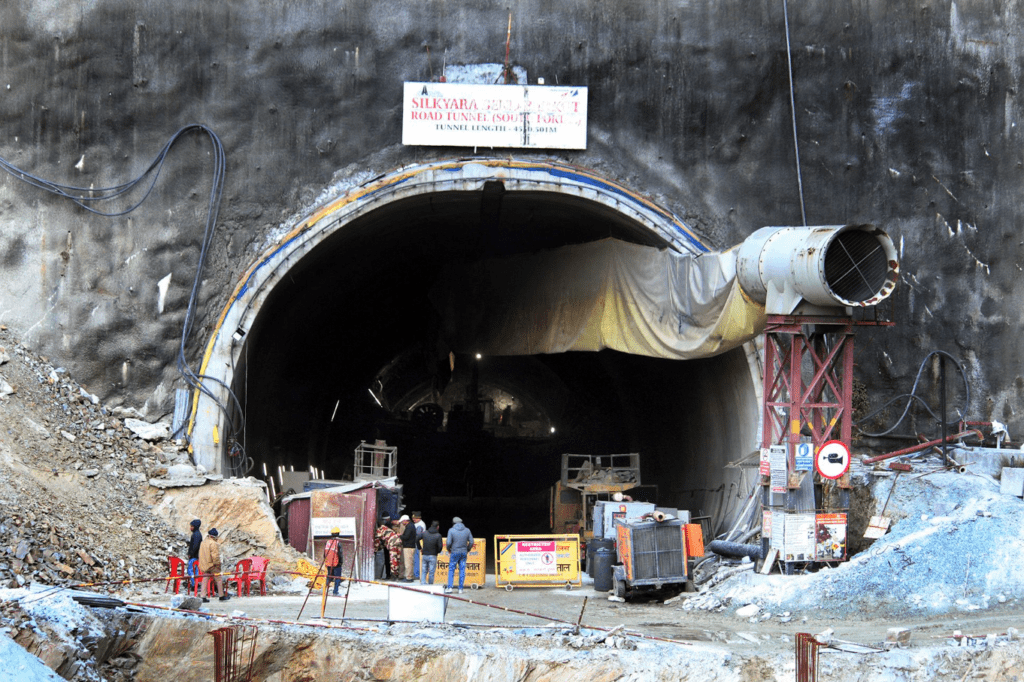Rescuers successfully liberated 41 workers who had been trapped for 17 days in a collapsed Himalayan tunnel in Uttarakhand, India.
The 4.5km (3-mile) Silkyara tunnel, part of the flagship $1.5bn Char Dham project, faced challenges that tested the endurance of both the workers and rescuers.
Utilizing hand-held drills, a group of skilled “rat-hole” miners played a pivotal role in breaking through the rock to reach the trapped individuals.
The workers were brought out on wheeled stretchers through a narrow 90cm (3ft) wide pipe, and to the relief of all, no injuries were reported.
President Droupadi Murmu expressed her relief on X, formerly Twitter, praising the rescue effort as a testament to human endurance.
The rescued workers, emerging to wild cheers, flower garlands, and celebrations from friends, family, and local residents, were immediately taken to the hospital for check-ups.
From the onset of the rescue, communication with the trapped workers was maintained through walkie-talkies, and they were supplied with essential provisions through a separate narrow pipe.


The challenging mission faced setbacks, including the breakdown of the main drilling machine, but resilience prevailed.
The Silkyara tunnel, a vital part of the Char Dham project connecting key Hindu pilgrimage sites, had collapsed due to a landslide.
The rescue teams had to clear about 60 meters of rubble, consisting of rock and metal, to create a horizontal exit passage for the trapped workers.
Cutting through metal rods in the rubble and dealing with loose soil slowed down the rescue efforts.
The deployment of “rat-hole” miners, experts in narrow tunnel navigation, became crucial in manually drilling and clearing the passage to reach the workers.
The prolonged rescue operations, which had the nation on edge, witnessed a moment of joy when the trapped men clapped and shouted in excitement upon the breakthrough.
The Uttarakhand government credited the success of the rescue to a combination of science and faith.
The rescued workers, mostly in their 20s, were reported to be in good health and were taken to a nearby hospital for a medical assessment.
The images of the trapped men captured earlier through a medical endoscopy camera, depicted them standing in a semi-circle in the glow of tunnel lights.
While the rescue brought relief, concerns about the environmental impact lingered.
Some environmentalists and residents attributed the tunnel collapse to rapid construction, including the Char Dham project, leading to land subsidence in the region.
Uttarakhand, the birthplace of major Indian rivers, sustains over 600 million people with water and food.
Hemant Dhyani, an environmentalist, highlighted the intensification of tunnel work in the last two decades, expressing concern that the mountains were not equipped for such massive infrastructure development.
The region’s significance in maintaining India’s climate and serving as a carbon sink was also emphasized, underscoring the need for sustainable development in the fragile Himalayan ecosystem.
Wild Elephant Herd Tramples Car After Collision With Baby Elephant On Malaysian Highway

